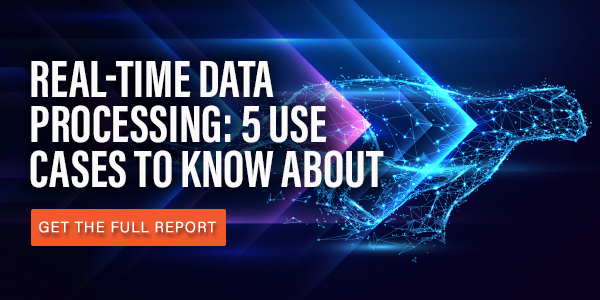Key Takeaways
- Real-time data processing, enabled by technologies like 5G, edge computing, and IoT, has evolved to the point where true real-time decisioning (sub-10 milliseconds) is achievable.
- With the right technologies, businesses can collect, process, analyze, and act on data with unrivaled speed, leading to benefits like increased revenue, reduced fraud, and optimized processes.
- Situational intelligence, using real-time data for informed decisions, helps organizations anticipate and react to problems in real time, with applications in network analysis, fraud detection, and cybersecurity.
- Real-time data processing enables hyper-personalization, delivering tailored experiences based on individual behaviors and preferences, as seen in e-commerce recommendations and targeted advertising.
- Businesses leveraging real-time decisioning can make highly informed decisions rapidly, improving customer experiences and stakeholder satisfaction through situational intelligence and hyper-personalization.
Over the last ten years, there’s been a lot of talk about real-time data and real-time decisioning, and how they promise to transform how organizations operate.
Up until recently, however, “real time” didn’t actually mean “real time” — it meant something closer to “as fast as is possible with current technology.”
Fast-forward a decade, and technology has finally evolved to the point where “real time” is actually achievable.
Thanks to a combination of innovative technologies — including 5G networks, edge computing, the Internet of Things (IoT), and an underlying data platform capable of supporting real-time decisioning (i.e., sub-10 milliseconds) — true real-time experiences are indeed possible.
With the right technologies in place, it’s possible for businesses to collect, process, analyze, and act on data with unrivaled speed — which can help operators generate more revenue, prevent revenue leakage, improve fraud detection, and optimize business processes.
What exactly does this look like in practice?
To give you a better idea, let’s examine two key real-time data processing use cases covered in a recent report by Dr. Fern Halper, Ph.D., of TDWI.

Table Of Contents
1. Situational intelligence
Situational intelligence is an organization’s ability to anticipate and react to problems in real time, using data to make informed decisions. While situational intelligence has long been used to accelerate disaster response and optimize military operations, enterprises across all verticals are now using situational intelligence apps to great effect — particularly when it comes to things like network analysis, fraud detection, and cybersecurity.
Keeping a heavily trafficked system up and running smoothly to ensure you’re able to deliver optimal user experiences on a consistent basis is only possible when engineers are able to monitor, manage, and adjust networks in real time. As an example, telco operators can conduct network analysis with real-time data to identify overloaded cells and pinpoint areas of weak transmission. Armed with this information, they can reroute calls to less congested parts of the network, improving quality of service while keeping customers happy.
Real-time data processing can also help organizations detect and prevent fraud. Using machine learning and artificial intelligence, organizations can identify patterns and use them to uncover anomalies that could indicate a fraudulent transaction is taking place, and the team can respond immediately to reduce potential impacts. When organizations are able to analyze real-time network data and respond within milliseconds, they can even prevent fraudulent transactions from ever being finalized.
In an age of high-profile, costly data breaches — according to IBM, the average breach costs U.S. companies $9.44 million — organizations need to fortify their cybersecurity stance to protect against bad actors. When disaster strikes, it’s imperative for organizations to respond as quickly as possible; the longer a bad actor can access a network, the more damage they can do. When an organization has the technology it needs to process data in real time and act on it immediately, it’s much easier to detect instructions and other threats, and even block them before they strike.
2. Hyper-personalization
According to McKinsey, 71 percent of customers today expect personalized experiences and 76 percent are frustrated when experiences aren’t personalized.
With the right technologies in place, it’s possible to deliver hyper-personalized experiences that cater to an individual’s behaviors and preferences in the moment. For example, when you’re browsing Amazon and see a list of recommended products, chances are at least one or two of those pique your interest. That’s not by accident; the ecommerce juggernaut is using tools like artificial intelligence and machine learning to predict what you might like based on what you’ve purchased and what other people who’ve bought the same items have also purchased. It’s an easy way to capitalize on upselling and cross-selling opportunities at the ideal times — like right when the customer is about to check out.
Similarly, real-time data processing can also improve programmatic advertising success by helping companies target their ideal users in a highly sophisticated manner. In fact, advertisers can even adjust campaigns in real time to accommodate fluctuating market sentiments and changing consumer behaviors.
When you’re able to act in real time, the possibilities are endless
Businesses that can truly unlock the promise of real-time decisioning are able to make highly informed decisions when seconds matter.
From developing situational intelligence to serving up hyper-personalized experiences on a regular basis, there’s no shortage of ways organizations can use real-time data processing to impress their customers and their stakeholders.
To learn more about how your organization can use real-time data processing to improve margins, delight customers, and increase operational efficiency, check out Dr. Halper’s full paper: Real-Time Data Processing: Five Use Cases to Know About.





